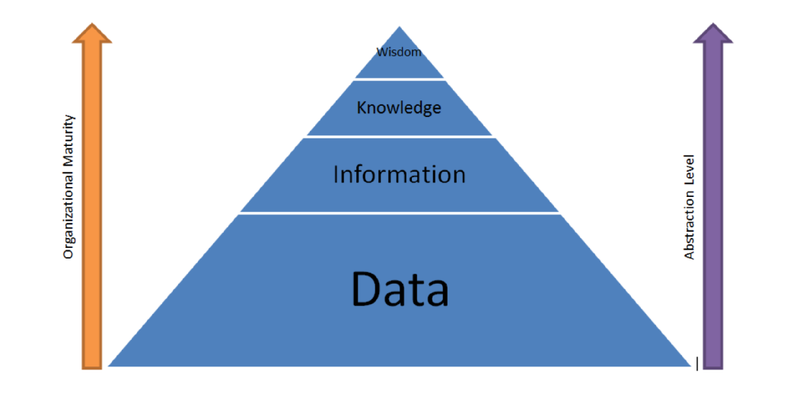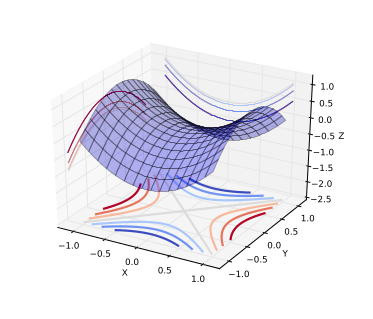Why Deep Learning Works – Key Insights and Saddle Points
Why Deep Learning Works – Key Insights and Saddle Points
A quality discussion on the theoretical motivations for deep learning, including distributed representation, deep architecture, and the easily escapable saddle point.
This post summarizes the key points of a recent blog post by Rinu Boney, based on a lecture by Dr. Yoshua Bengio from this year's Deep Learning Summer School in Montreal, which discusses the theoretical motivations for deep learning.

"To generalize locally, we need representative examples for all relevant variations."
Deep learning is about learning multiple levels of representations, corresponding to multiple levels of abstractions. If we are able to learn these multiple levels of representation, we are able to generalize well.
After setting the general tone of the post with the above (paraphrased) statement, the author presents a number of different artificial intelligence (AI) strategies, from rule-based systems to deep learning, and notes on at which levels of learning their components function. He then states the 3 keys to moving from machine learning (ML) to true artificial intelligence: Lots of data, very flexible models, and powerful priors, and that, since classical ML can handle the first 2, his post deals with the third.
On the path toward AI from today's ML systems, we need learning, generalization, ways to fight the curse of dimensionality, and the ability to disentangle the underlying explanatory factors. Before explaining why non-parametric learning algorithms won't get us to true AI, he gives a nuanced definition of non-parametric. He explains why smoothness, a classical non-parametric approach, won't work on high-dimensionality, and then provides the following insight re: dimensionality:
"If we dig deeper mathematically, it's not the number of dimensions but the number of variations of functions that we learn. In this case, smoothness is about how many ups and downs are present in the curve."

"A line is very smooth. A curve with some ups and downs is less smooth but still smooth."
So, it's clear that smoothness will not beat the curse of dimensionality alone. In fact, smoothness doesn't even apply to modern, complex problems like computer vision or natural language processing. After discussing the downfalls of such competing methods as Gaussian kernels, Boney sets his sights on moving past smoothness, and why that's necessary:
"We want to be non-parametric in the sense that we want the family of functions to grow in flexibility as we get more data. In neural networks, we change the number of hidden units depending on the amount of data."
He notes that in deep learning, 2 priors are used, namely distributed representations and deep architecture.
Why distributed representations?
"With distributed representations, it is possible to represent exponential number of regions with a linear number of parameters. The magic of distributed representation is that it can learn a very complicated function (with many ups and downs) with a low number of examples."
In distributed representations, features are individually and independently meaningful, and they remain so regardless of what the other features are. There maybe some interactions but most features are learned independent of each other. Boney states that neural networks are very good at learning representations capturing the semantic aspects, and that their generalization power is derived from these representations. As a practical exploration of the topic, he recommend's Cristopher Olah's article for some information on distributed representation and Natural Language Processing.
There is a lot of misunderstanding about what depth means.
"Deeper networks does not correspond to a higher capacity. Deeper doesn't mean we can represent more functions. If the function we are trying to learn has a particular characteristic obtained through composition of many operations, then it is much better to approximate these functions with a deep neural network."
Boney then comes full circle. He explains that one of the reasons neural network research was abandon (once again) in the late 90s was because the optimization problem is non-convex. The realization from the work in the 80s and 90s that neural networks have an exponential number of local minima, along with the breakout success of kernel machines, also led to this downfall, as did the fact that networks may get stuck on poor solutions. Recently we have evidence that the issue of non-convexity may be a non-issue, which changes its relationship vis-a-vis neural networks. 
"A saddle point is illustrated in the image above. In a global or local minima, all the directions are going up and in a global or local maxima, all the directions are going down."
Saddle Points.
"Let us consider the optimization problem in low dimensions vs high dimensions. In low dimensions, it is true that there exists lots of local minima. However in high dimensions, local minima are not really the critical points that are the most prevalent in points of interest. When we optimize neural networks or any high dimensional function, for most of the trajectory we optimize, the critical points(the points where the derivative is zero or close to zero) are saddle points. Saddle points, unlike local minima, are easily escapable."
The intuition with the saddle point, is that, for a minima located close to the global minima, all directions should be climbing upward; going further downward is not possible. Local minima exist, but are very close to global minima in terms of objective functions, and theoretical results suggest that some large functions have their probability concentrated between the index (the critical points) and the objective function. The index is the fraction of directions moving downward; for all values of index not 0 or 1 (local minima and maxima, respectively), then it is a saddle point.
Boney goes on to say that there has been empirical validation corroborating this relationship between index and objective function, and that, while there is no proof the results apply to neural network optimization, some evidence suggests that the observed behavior may well correspond to the theoretical results. Stochastic gradient descent, in practice, almost always escapes from surfaces that are not local minima.
This all suggests that local minima may not, in fact, be an issue because of saddle points.
Boney follows his saddle points discussion up by pointing out a few other priors that work with deep distributed representations; human learning, semi-supervised learning, and multi-task learning. He then lists a few related papers on saddle points.
Rinu Boney has written a detailed piece on the motivations for deep learning, including a good discussion on saddle points, all of which is difficult to do justice with a few quotes and some summarization. If you are interested in a deeper discussion of the above points to visit Boney's blog and read the insightful and well-written piece yourself.
Bio: Matthew Mayo is a computer science graduate student currently working on his thesis parallelizing machine learning algorithms. He is also a student of data mining, a data enthusiast, and an aspiring machine learning scientist.
Related:
Most popular last 30 days
Most viewed last 30 days
- Top 5 arXiv Deep Learning Papers, Explained - Oct 1, 2015.
- Data Lake vs Data Warehouse: Key Differences - Sep 29, 2015.
- 60+ Free Books on Big Data, Data Science, Data Mining, Machine Learning, Python, R, and more - Sep 4, 2015.
- R vs Python for Data Science: The Winner is ... - May 26, 2015.
- R vs Python: head to head data analysis - Oct 13, 2015.
- 30 Cant miss Harvard Business Review articles on Data Science, Big Data and Analytics - Sep 30, 2015.
- 9 Must-Have Skills You Need to Become a Data Scientist - Nov 22, 2014.
Most shared last 30 days
- Top 5 arXiv Deep Learning Papers, Explained - Oct 1, 2015.
- 30 Cant miss Harvard Business Review articles on Data Science, Big Data and Analytics - Sep 30, 2015.
- 90+ Active Blogs on Analytics, Big Data, Data Mining, Data Science, Machine Learning - Oct 8, 2015.
- How Big Data Helps Build Smart Cities - Oct 16, 2015.
- Does Deep Learning Come from the Devil? - Oct 9, 2015.
- 5 steps to actually learn data science - Oct 6, 2015.
- R vs Python: head to head data analysis - Oct 13, 2015.
Why Deep Learning Works – Key Insights and Saddle Points的更多相关文章
- why deep learning works
https://medium.com/towards-data-science/deep-learning-for-object-detection-a-comprehensive-review-73 ...
- Growing Pains for Deep Learning
Growing Pains for Deep Learning Advances in theory and computer hardware have allowed neural network ...
- Decision Boundaries for Deep Learning and other Machine Learning classifiers
Decision Boundaries for Deep Learning and other Machine Learning classifiers H2O, one of the leading ...
- Why deep learning?
1. 深度学习中网络越深越好么? 理论上说是这样的,因为网络越深,参数也越多,拟合能力也越强(但实际情况是,网络很深的时候,不容易训练,使得表现能力可能并不好). 2. 那么,不同什么深度的网络,在参 ...
- Use of Deep Learning in Modern Recommendation System: A Summary of Recent Works(笔记)
注意:论文中,很多的地方出现baseline,可以理解为参照物的意思,但是在论文中,我们还是直接将它称之为基线,也 就是对照物,参照物. 这片论文中,作者没有去做实际的实验,但是却做了一件很有意义的事 ...
- (转)WHY DEEP LEARNING IS SUDDENLY CHANGING YOUR LIFE
Main Menu Fortune.com E-mail Tweet Facebook Linkedin Share icons By Roger Parloff Illustration ...
- The Brain vs Deep Learning Part I: Computational Complexity — Or Why the Singularity Is Nowhere Near
The Brain vs Deep Learning Part I: Computational Complexity — Or Why the Singularity Is Nowhere Near ...
- What are some good books/papers for learning deep learning?
What's the most effective way to get started with deep learning? 29 Answers Yoshua Bengio, ...
- (转) Learning Deep Learning with Keras
Learning Deep Learning with Keras Piotr Migdał - blog Projects Articles Publications Resume About Ph ...
随机推荐
- [tools]神器notepad++
1,现象 notepad++编辑sh文件,放入linux后执行会有问题 2,解决: 2.1dos2unix转换文件 2,2 修改notepad++默认字符集 2,快捷键: ctrl+k 单行.多行注释 ...
- Dungeon Game ——动态规划
The demons had captured the princess (P) and imprisoned her in the bottom-right corner of a dungeon. ...
- C语言操作符优先级
C语言操作符优先级 优先级 运算符 含 义 要求运算 对象的个数 结合方向 1 () [] -> . 圆括号 下标运算符 指向结构体成员运算符 结构体成员运算符 自左至右 2 ! 逻辑非运 ...
- Linux常用指令---快捷键
Linux下快捷键使用 Ctrl + a 切换到命令行开始 这个操作跟Home实现的结果一样的,但Home在某些unix环境下无法使用,便可以使用这个组合:在Linux下的vim,这个也是有效的:另外 ...
- Nutch搜索引擎(第2期)_ Solr简介及安装
1.Solr简介 Solr是一个高性能,采用Java5开发,基于Lucene的全文搜索服务器.同时对其进行了扩展,提供了比Lucene更为丰富的查询语言,同时实现了可配置.可扩展并对查询性能进行了优化 ...
- 20145233韩昊辰 《Java程序设计》实验报告一:Java开发环境的熟悉(Windows+IDEA)
20145233 <Java程序设计>实验报告一:Java开发环境的熟悉 实验要求 使用JDK编译.运行简单的Java程序: 使用IDEA 编辑.编译.运行.调试Java程序. 实验内容 ...
- Jenkins进阶系列之——14配置Jenkins用户和权限
今天给大家说说使用Jenkins专有用户数据库的配置,和一些常用的权限配置. 配置用户注册 在已运行的Jenkins主页中,点击左侧的系统管理—>Configure Global Securit ...
- iOS端给unity发送消息,实现两者交互。
上一篇我们简单说了一下unity发消息给iOS端.现在我们就来说一下iOS端给unity发送消息的简单使用. 首先iOS端做得事情其实很简单就一句话,直接上代码 /** * 第一个参数:是unity那 ...
- WIN7下USB多点触摸,一次发多个数据包的延迟问题,重要!
这个问题很常见, 花了差不多一个星期时间来解决.硬件相关的东西太多坑了,而且这些坑不像代码那样可见. 使用混合模式,每次最多报告2个点.如果是5点则需要上报三次. 问题就来了,atmel的CTP最 ...
- Spring cloud实现服务注册及发现
服务注册与发现对于微服务系统来说非常重要.有了服务发现与注册,你就不需要整天改服务调用的配置文件了,你只需要使用服务的标识符,就可以访问到服务. 本文属于<7天学会spring cloud系列& ...

 Previous post
Previous post